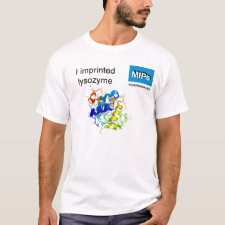
Authors: Rick J, Chou TC
Article Title: Amperometric protein sensor - fabricated as a polypyrrole, poly-aminophenylboronic acid bilayer.
Publication date: 2006
Journal: Biosensors and Bioelectronics
Volume: 22
Issue: (3)
Page numbers: 329-335.
DOI: 10.1016/j.bios.2006.04.007
Alternative URL: http://www.sciencedirect.com/science/article/B6TFC-4K48M50-2/2/0048d3dcfefa7c91041fbc6469133cfa
Abstract: An approach to the design of electrodes for the production of sensors, which show significant changes to the passage of current in response to the concentration of target protein molecules, is presented.Screen-printed platinum electrodes, modified with two separately applied conducting polymer layers, have been developed as a potential route to forming cheap disposable protein sensors. To achieve a heightened response for the target molecules, an initial layer of polypyrrole was formed on the electrode's surface by electro-deposition. This composite was then employed as a substrate for the subsequent electro-deposition of a relatively thin `sensing layer' of poly-aminophenylboronic acid.Cyclic voltammetry (CV) of the prepared films revealed an excursion in the current versus potential curve in the anodic phase at approximately 0.0 to +0.2 V. It was clearly shown that the introduction of proteins into the CV cell resulted in a measurable decrease in the passage of current in buffered aqueous media. Measured current reductions observed on introducing lysozyme (10 ppm) into the test solution were 2.3 x 10-6 A for an electrode formed with a poly-aminophenylboronic acid layer on platinum, and 1.75 x 10-5 A for a composite electrode formed with poly-aminophenylboronic acid on a polypyrrole coated platinum substrate.The introduction of the competing analytes, dl adrenaline or dopamine, at concentrations typically found in human urine, had little effect on the sensor's response. Additionally, the sensing system was able to maintain a response to added target proteins with as much as 2 vol.% urine in the test solution.Using the electrodes in high concentrations of competing physiological analytes, they were able to respond to protein concentrations as low as 0.5 ppm in buffered solutions containing urea at a concentration representative of human urine (17,000 ppm), which additionally contained glucose (1000 ppm)
Template and target information: protein, lysozyme
Author keywords: protein, sensor, polypyrrole, aminophenylboronic acid, cyclic voltammetry



Join the Society for Molecular Imprinting

New items RSS feed
Sign-up for e-mail updates:
Choose between receiving an occasional newsletter or more frequent e-mail alerts.
Click here to go to the sign-up page.
Is your name elemental or peptidic? Enter your name and find out by clicking either of the buttons below!
Other products you may like:
 MIPdatabase
MIPdatabase









